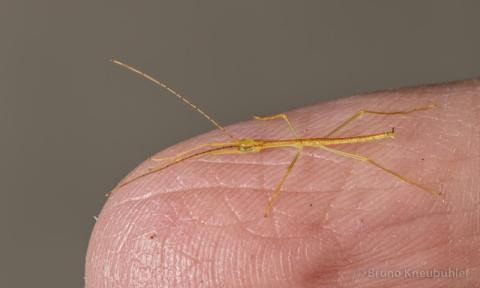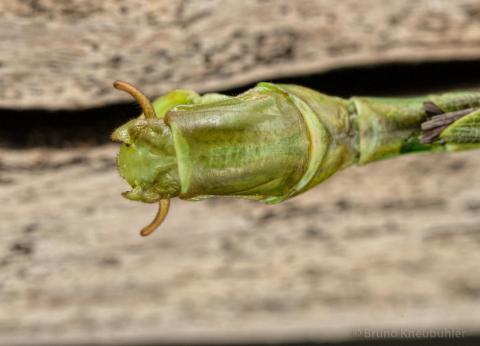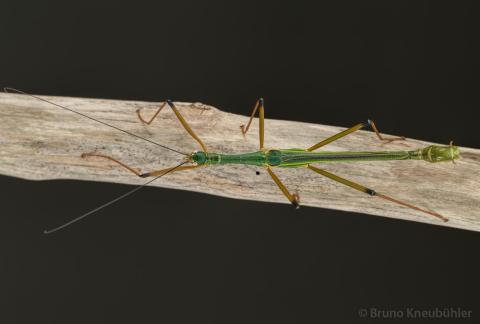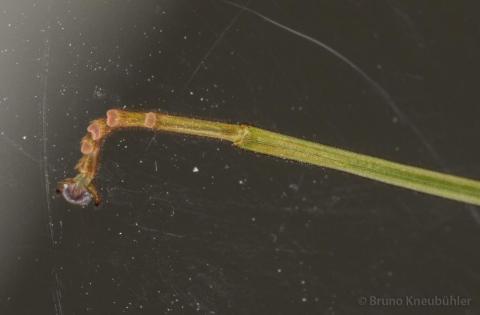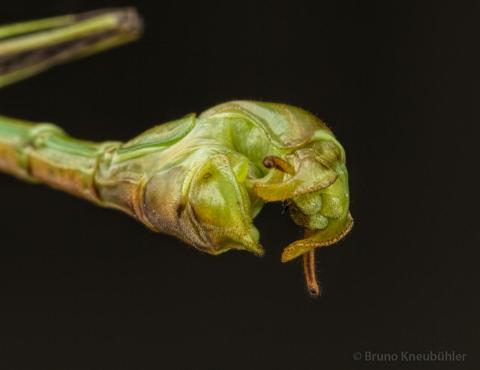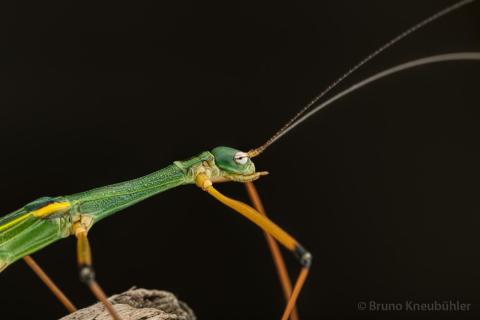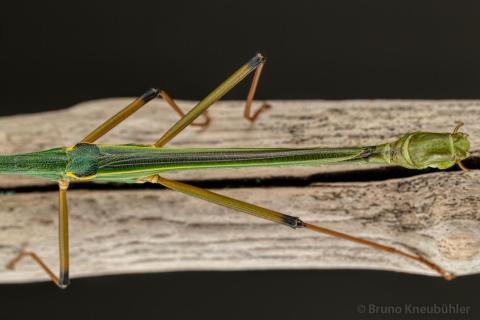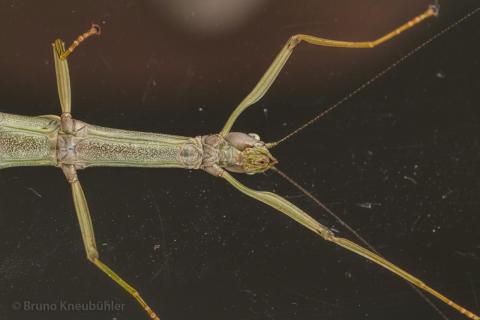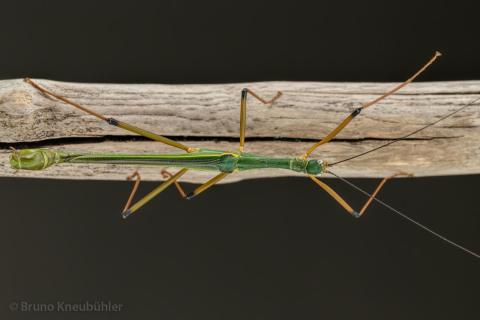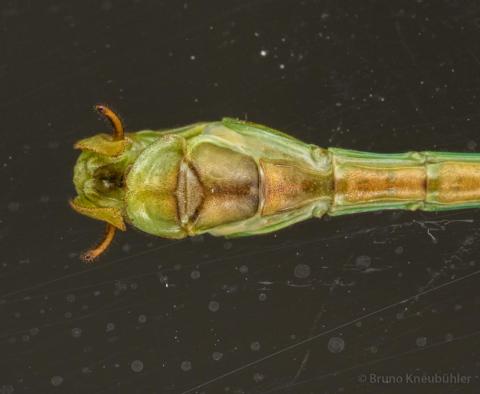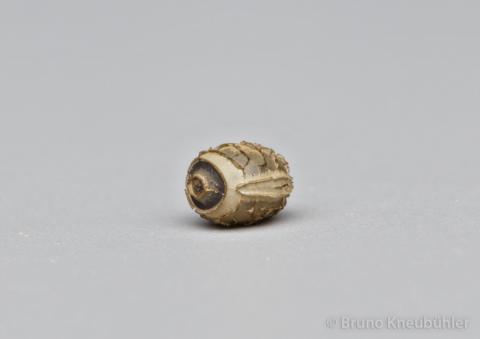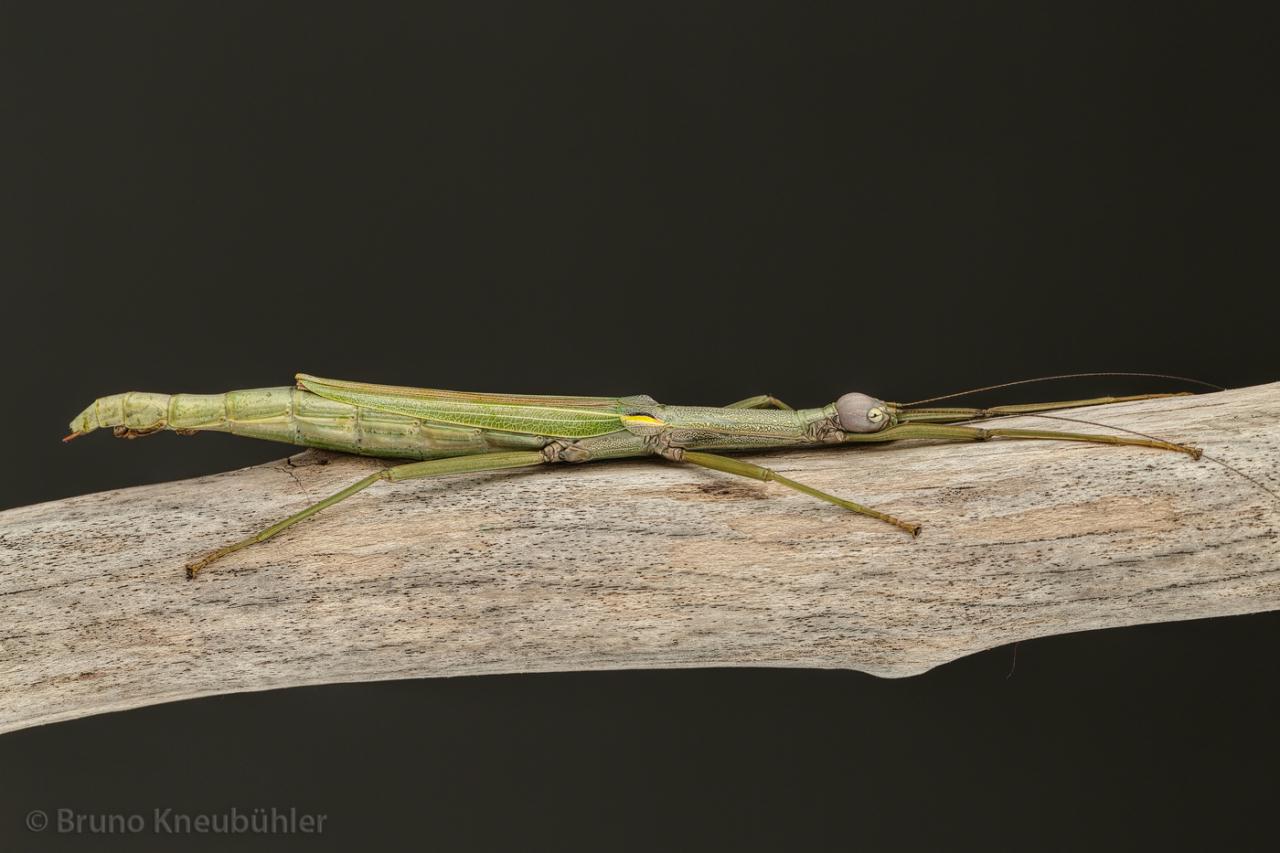
Genus
Species
Stock
CLP
629
Culture status
In culture
Foodplants
Bramble (Rubus spp.)
Sweet chestnut (Castanea sativa)
Breeding notes
(by Bruno Kneubühler)
General Notes
- this species is being exmined taxonomically by Joachim Bresseel (Belgium)
- for further taxonomical informations → Phasmida Species Files
_________________
Culture History
- 2014 - first successful culture by Bruno Kneubuehler
- 2014 – distributed to other breeders as Micadina sp. 2 „Tay Yen Tu“
_________________
Origin
- Tay Yen Tu NP in Vietnam
_________________
Females
- slender, winged phasmids
- body length about 8 cm
- coloration very consistent amonst females
- body and legs mainly pale green
- head pale greenish-violet
- eyes pale green
- black-yellow-orange marking on forewings
- anal region of the hindwings (the membranous part) translucent and pale violet
- long antennae
- long, brown cerci
- praeopercular organ (the structure at the ventral end of the 7th abdominal segment, which serves as an anchorage for the male during mating) is very well developed
_________________
Males
- slim, winged and colorful phasmids
- body length about 7 cm
- coloration is consistent amongst males
- body mainly a strong green
- eyes pale grey
- black-yellow marking on forewings
- fine, yellow line on the outer costal region of hindwings
- legs brown with black knees
- belly-side of abdomen brown
- long antennae
- anal region of the hindwings (the membranous part) translucent and pale violet
_________________
Nymphs
- small and very (!) quick
- body lenght about 7 mm
- yellow-brown with a dark strip over the back
- by L4 it is quite easy to draw a distinction between ♀♂ (by the naked eye)
_________________
Eggs
- very small
- about 2 x 1.5 mm
- pale brown
- roundish
- surface net-like structured
- matt
- distinct capitulum present on the operculum (lid)
- micropylar plate long and lance-shaped
_________________
Food Plants
- it is very much recommendede to cut away the edges of the leaves for nymphs in L1
- regularly change the plants and the water in which they stand
- bramble (Rubus spp.)
is well accepted by nymphs and adults - sweet chestnut (Castanea sativa)
is well accepted by nymphs and adults
- if freshly hatched nymphs do not accept the food plants well, then one can apply the apple-slice-trick
_________________
Behaviour
- attention – freshly hatched nymphs are quick and cause they are rather small they escape easily
- but older nymphs and especially adult males are often also active during the day
- nymphs and adults can react very rather frantically when they get frightened. Then they drop down, wriggle about
- if they are treated cautiously, then they can also be quite trusting
- adult males can fly well
- matings occur mainly during the night, and they last for only a few minutes. As in other Micadina species, matings in this species are rather boisterously. See here a video of a mating in Micadina sp. „Cuc Phuong“
- females just drop the eggs to the ground
_________________
Developement
- incubation time (HH-incubation on slightly damp sand at 20 - 23 °C) is about 5 – 6 months
- please note, that for phasmids it is not uncommon that some nymphs hatch a few or many months after the first nymphs hatched
- spread some moss over the eggs - this will make it much easier for the nymphs to hatch unscathed and it also reduces mould growth to some extend
- hatching ratio can be very high (> 50%)
- males will be adult after about 2 months (at 20 – 23°C), females after about 2.5 months
- females start laying eggs after about 2 – 3 weeks
- about 80 – 100 eggs per female and week
- adults can live for several months
_________________
Breeding Notes
- my general notes on how to breed phasmids are an integral part of this care sheet …
- it is recommend to keep this species in a seperate cage. The culture is much more likely to be successful than in an multi-species cage which are all too often badly crowed
- degree of difficulty = 2 (1= very easy / 5 = very difficult)
- keep nymphs seperate from the adults. This makes it much easier to monitor their developement and they are protected from being disturbed or even harmed by the much bigger adults (like during their moults)
- keep the nymphs in a cage with good ventilation, but take care that the humidity does not drop too low
- a constantly wet paper towel on the floor of the cage helps raising humidity
- a humidity level of about 60+ % rH (for adults) and 75+ % rH (for nymphs) seems to be fine
- nymphs can be kept in a Faunabox (or similar cages like Faunarium)
- move nymphs to a bigger cage as they grow bigger
- a cage of at least 30 x 30 x 30 cm height should be provided for 4 adult couples
- at least 2 (-3) cages are needed to breed this species – one cage for the small nymph, maybe another one for the older nymphs and one cage for the adults
- I have never sprayed nymphs, adults or their cage with water
- make sure that nymphs, which are about to undergo their adult moult, do not find places in the cage which would not offer them enough space beneath to moult successfully






